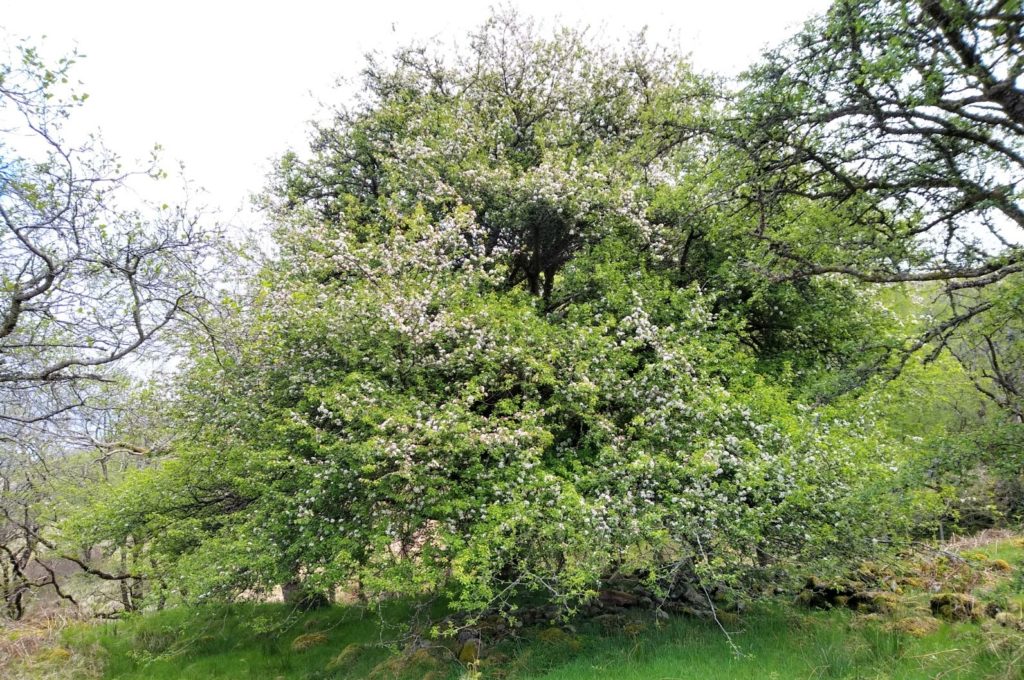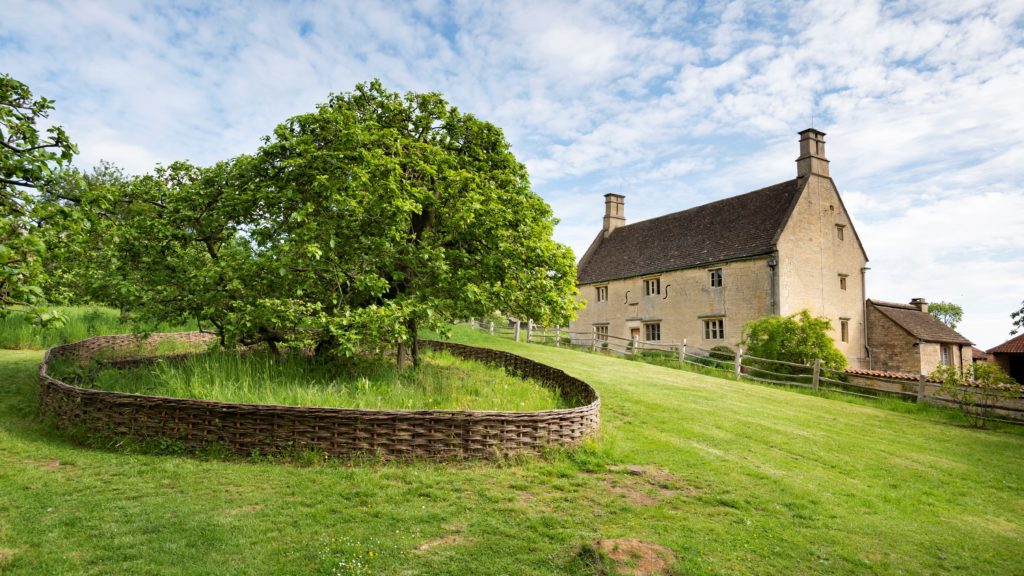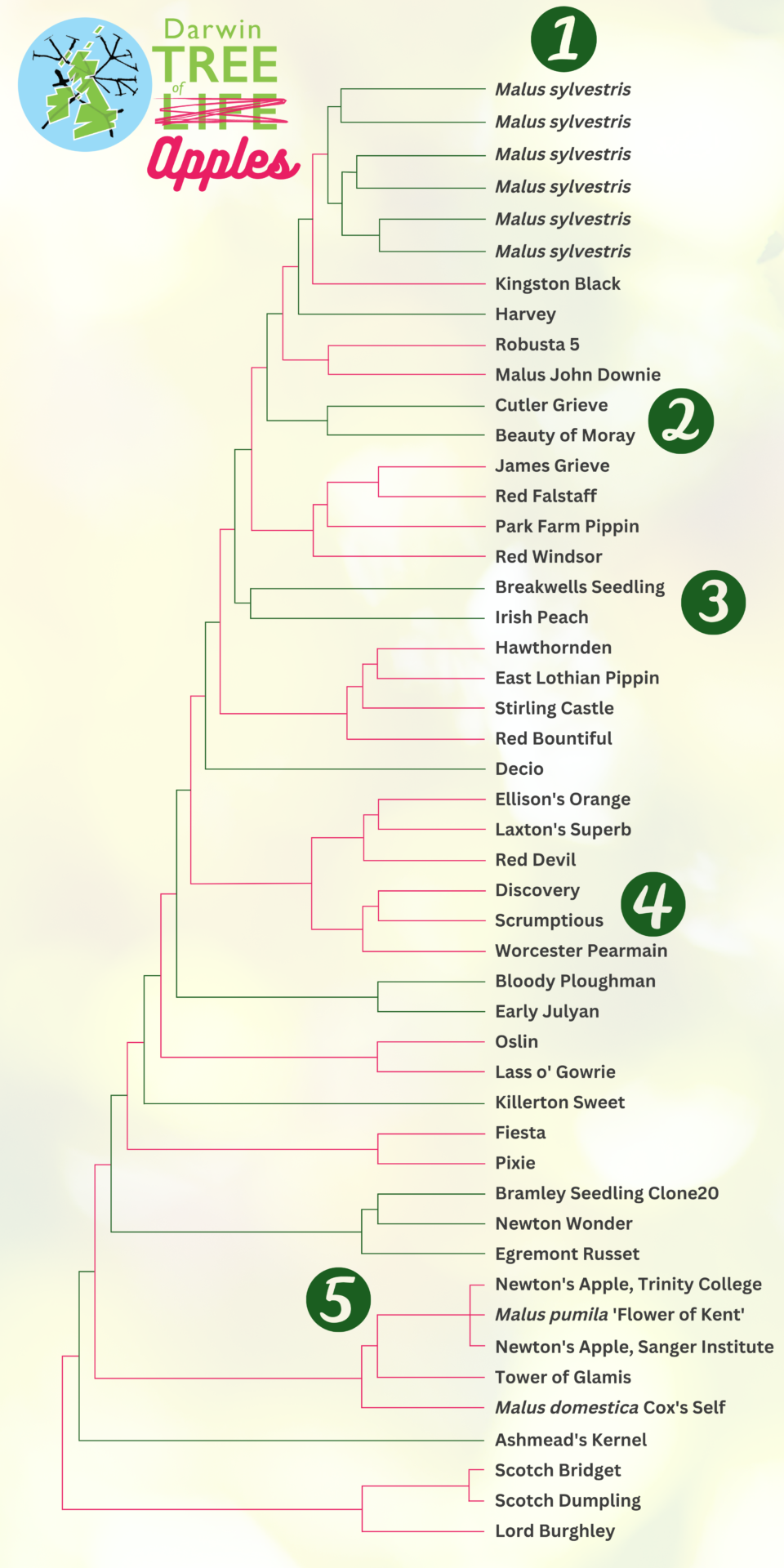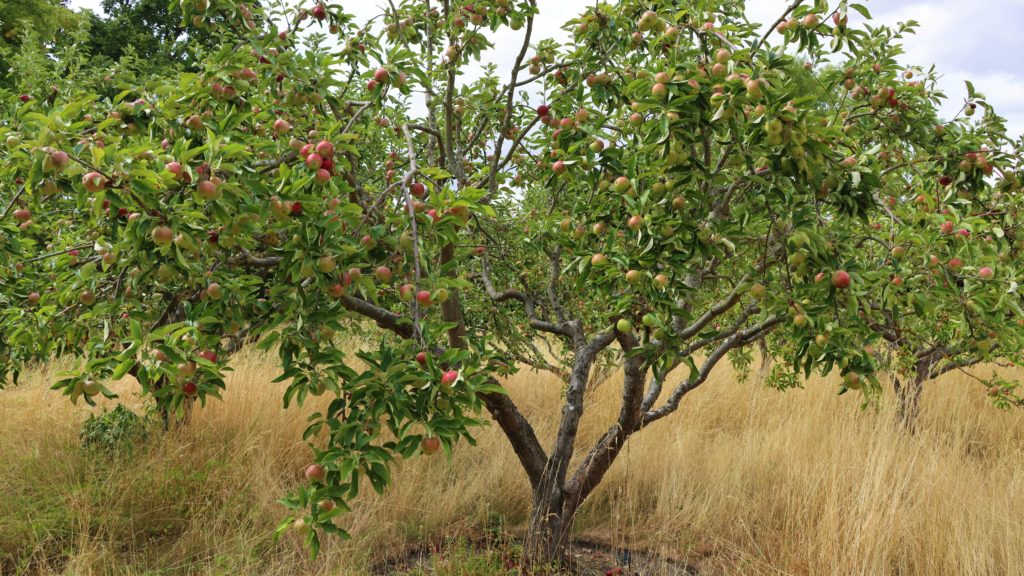
Comparing apples with apples: Our first plant genomes
Britain and Ireland boast an estimated 2,500 homegrown varieties of edible apple (Malus domestica), one third of the approximately 7,500 types found worldwide. And yet more than 50% of all apples sold in the UK are either Gala or Braeburn varieties – both developed in New Zealand.
Meanwhile, our native wild crab apple (Malus sylvestris) is in a precarious position, its genetic integrity undermined by hybridisation with widely-planted domestic relatives. Nearly 30% of the ‘wild’ apple trees surveyed in a recent study in northern Britain turned out to be of hybrid origin.
Our rich apple heritage – and a lack of public understanding around it – encouraged Darwin Tree of Life scientists to dig deep into apple genomics.
Now, M. domestica and M. sylvestris have both been published as the project’s first plant reference genomes. On top of that, additional sequences have been produced for over 40 other apple trees across Britain and Ireland. All this makes it much easier (genomically at least) to compare apples with apples.

The core: 5 apple reference genomes
Darwin Tree of Life generated five reference genomes from different apple trees.
Malus sylvestris. Our wild crab apple genome was sequenced from a tree sampled by the Royal Botanic Garden Edinburgh along the West Highland Way in Glenfalloch near Stirling. Northern Britain (and especially Scotland) host many of the remaining strongholds for ‘pure’ crab apple trees.
Malus domestica ‘Costard’. One of the oldest apples recorded in England’s historical records, Costard was a popular variety for hundreds of years before falling out of fashion. Our tree was sampled from a tree at the Royal Botanic Gardens, Kew.
Malus domestica ‘Bardsey Island Apple’. An eating apple with a distinctive lemon aroma, this variety was rediscovered on an island off northwest Wales and believed to have originally been grown by mediaeval monks. Our sample came from RHS Wisley.
Malus domestica ‘Brown Snout’. A cider apple originating in the 19th century in Herefordshire, Brown Snout’s name is inspired by its russety top. Our sample came from RHS Wisley.
Malus domestica ‘Flower of Kent’. A cooking apple also known as ‘Newton’s Apple’ after the tree at Woolsthorpe Manor, Lincolnshire, which inspired Sir Isaac Newton’s law of universal gravitation – and from which our sample was collected.

Growing a genomic apple tree
Darwin Tree of Life reference genome assemblies, like the ones mentioned above, are generated using the latest long-read DNA sequencing technologies. This allows scientists to sequence greater stretches of DNA at once, and therefore produce more accurate full-genome assemblies that reflect the chromosome structure.
For our apple study, researchers also used short-read DNA sequencing technologies for more than 40 additional apple cultivated varieties (cultivars). While this does not produce the same chromosomal-level assemblies, it is more cost effective and provides highly accurate reads of shorter sections of DNA, which can be used for genomic comparisons.
The apple ‘tree’ below doesn’t plot time or location, but does show our preliminary genomic work on how closely related different varieties are. Below we explore some interesting parts of the tree.

![]() Darwin Tree of Life sequenced six additional trees thought to be M. sylvestris. The close relation of these trees, separated from any of the M. domestica varieties, show that they are a distinct species, though do not rule out the possibility of hybridisation with domesticated apples!
Darwin Tree of Life sequenced six additional trees thought to be M. sylvestris. The close relation of these trees, separated from any of the M. domestica varieties, show that they are a distinct species, though do not rule out the possibility of hybridisation with domesticated apples!
![]() These varieties – Cutler Grieve and the Beauty of Moray – both originate from Scotland around the same period. As you’d expect, both are closely related, unlike…
These varieties – Cutler Grieve and the Beauty of Moray – both originate from Scotland around the same period. As you’d expect, both are closely related, unlike…
![]() Breakwells Seedling (originating in Monmouthshire, southeast Wales) and Irish Peach (the clue to its origin being in the name). At some point someone took this variety over the Irish Sea.
Breakwells Seedling (originating in Monmouthshire, southeast Wales) and Irish Peach (the clue to its origin being in the name). At some point someone took this variety over the Irish Sea.
![]() The history books tell us that the 20th-century dessert apple Discovery has Worcester Pearmain as one of its parents. Our genomics corroborates this. It’s also known that Scrumptious is the offspring of a Discovery and Golden Delicious cross – and it’s nested right next to Discovery in our tree.
The history books tell us that the 20th-century dessert apple Discovery has Worcester Pearmain as one of its parents. Our genomics corroborates this. It’s also known that Scrumptious is the offspring of a Discovery and Golden Delicious cross – and it’s nested right next to Discovery in our tree.
![]() Several trees around the country claim to be descended from the famous tree whose fruit inspired Newton. We tested the original Woolsthorpe tree, plus clones at Trinity College in Cambridge and the Wellcome Sanger Institute. Fortunately, no historic apple fraud was uncovered. The very slight differences in the DNA have arisen since the clones were made!
Several trees around the country claim to be descended from the famous tree whose fruit inspired Newton. We tested the original Woolsthorpe tree, plus clones at Trinity College in Cambridge and the Wellcome Sanger Institute. Fortunately, no historic apple fraud was uncovered. The very slight differences in the DNA have arisen since the clones were made!
Apples into the future

Looking back at the history of our apple heritage is fascinating, but how are the Darwin Tree of Life’s new reference genomes applicable today and in the future?
As with most crop species, genomic studies around apples have been happening for many years. Our project has added five more genome assemblies of the highest quality to this ongoing research. Today, apple genomicists are exploring all manner of different questions.
Conservation. The plight of the crab apple is an example of how human actions drive not only visible habitat degradation but also a hidden genetic degradation of important wild species. With reference genomes for both M. sylvestris and M. domestica we can increase our understanding of this process and how it may affect the future of our native species. For example, by screening hybrids we can investigate if certain genes are preferentially passed on during hybridisation and thus likely to be incorporated long term in the genetic background of the wild apple.
Better yields. Modern orchards grow apple trees very close together and aim for the highest yields possible. Genomic studies may identify genetic traits that help trees cope with competition from nearby plants, bloom earlier, and produce better or more fruits.
Apple disease. This might involve identifying specific genes for resistance to diseases that affect apples, such as the fungal infection known as ‘scab’.
Climate change. Britain and Ireland have had perfect growing apple conditions for millennia. With global temperatures set to rise dramatically this may change in the near future. Genomics can help breeders adapt apples to these new pressures.
Human health. Researchers also hope to be able to increase the content of some of the chemical compounds produced by apples, which have been associated with important health-promoting benefits such as protection against cardiovascular disease and the treatment of diabetes.
For some, the most exciting thing about our project is how it offers a window into the history of Britain and Ireland’s apple heritage. However the data is used, it means we now have a better understanding of the deep roots these plants have in our past.
This apple research was produced by Darwin Tree of Life teams at the Royal Botanic Garden Edinburgh, Royal Botanic Gardens Kew and Wellcome Sanger Institute, in collaboration with our friends at the Cambridge University Botanic Garden, RHS Wisley, the National Trust and NIAB East Malling.
We also collaborated with a Cambridgeshire cider maker, Simon’s Cider, in order to bring our apple science to the general public. Tearn more about that part of the project, and for some fascinating cider facts, visit the Scider page on the Wellcome Genome Campus website.
